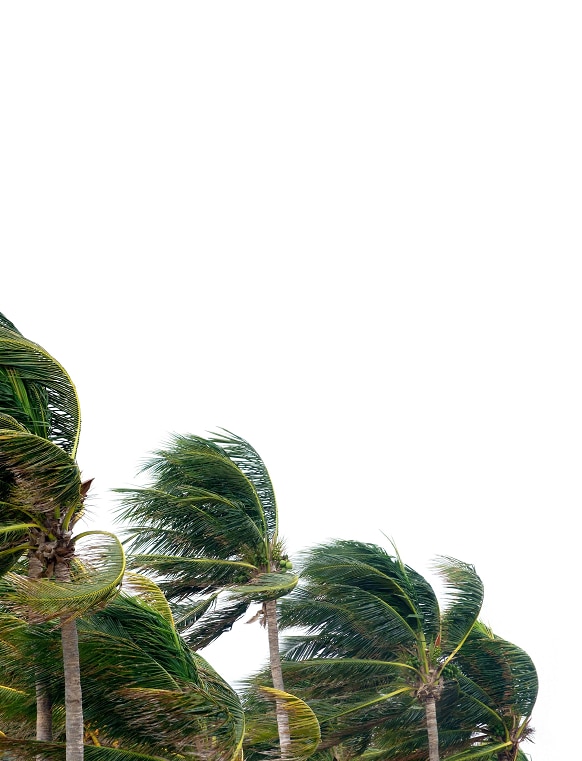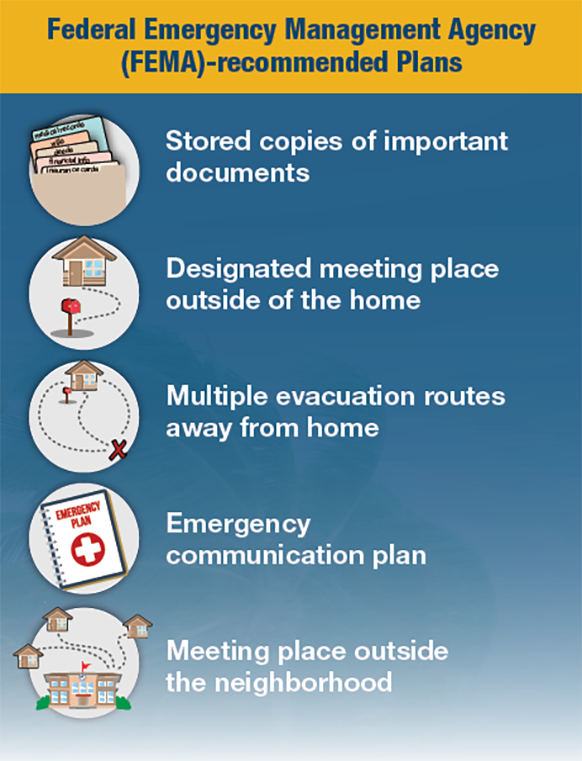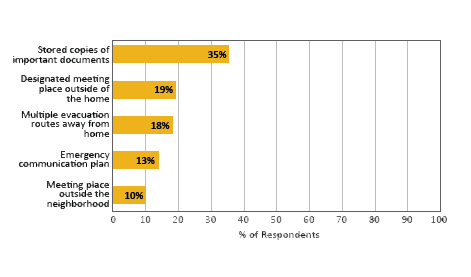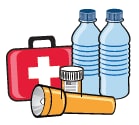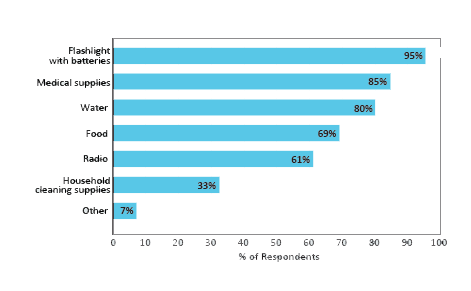Household Preparedness Fall 2020
See corresponding Household Preparedness Fall 2020 – Long Description »

OVERVIEW
When preparing for natural disasters and other emergencies, having a plan and an emergency supply kit are key. In fall 2020, a survey of adults in the general United States population assessed preparedness levels and emergency supply kit possession. Results show that many people in the United States may not have these important items to make them ready for a disaster.
METHODS
The Centers for Disease Control and Prevention (CDC) analyzed data collected through Porter Novelli’s (PN) FallStyles survey. The survey was conducted in fall 2020, with 3,625 adults from across the country. The survey included 10 questions related to preparedness and emergency supply kits, such as whether people had an emergency supply kit, what items were included in the kit, and whether they had ever experienced a natural disaster. Respondents were also asked about FEMA-recommended plans.
RESULTS
Overall, few people responded that they have preparedness plans.
- 51% of respondents had none of the FEMA-recommended plans.
- Less than 3% of respondents had all the FEMA-recommended plans.
- The most common plan was stored copies of important documents (35%) (Figure 1).
Few respondents had an emergency supply kit
- Only 1 in 3 respondents had an emergency supply kit.
- The most common items in their kit were a flashlight, medical supplies, and water (Figure 2).
BELIEFS play an important role in preparedness.
Those who are confident they know how to prepare for a disaster and believe that an emergency supply kit will improve their chance of survival were more likely to have an emergency supply kit and be prepared than those who did not have such beliefs.
